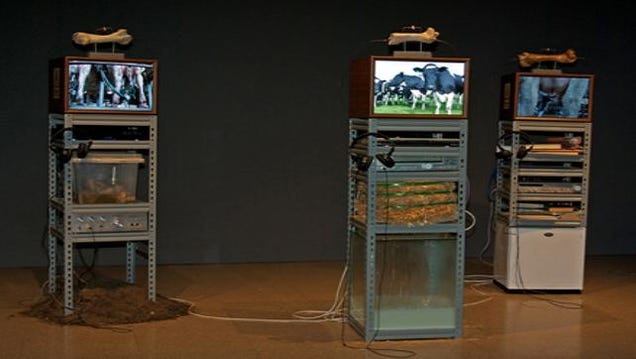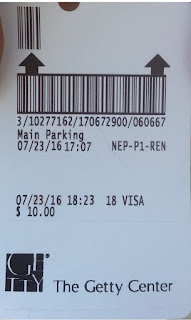Specifically things called nanoparticles are what really bring NanoTech and art together, through our material world with thing we can see despite that fact we really cannot see nanoparticles. Boo Chapple an artist, was able to make a speaker system created from bone... This relationship of art and NanoTech is created through the nanoparticles. They form a matrix that vibrates and by doing so produces sound. To me this really was a unique example of the complicated relationship between NanoTech and art.

Nanotechnology has also allowed for scientists to explore the world of nanoparticles and biomimicry. One example that has been highly looked at is the Adhesive feet of Geckos that allow them to support their weight while walking up walls or horizontal along walls. The adhesive of the Gecko feet actually comes from mini hairs on the feet of the gecko. This adhesive has been part of the NanoTech creations that could allow humans to almost replicate geckos to support themselves and walk up walls with the tech on. Geckos don't even use all the hairs on their feet when doing this, if they did they would be able to support one hundred times+ their own weight. This has fascinated artist and scientist with nanotech in hopes to duplicate these nano-particles to gain a huge advantage with the future of adhesives.

Not only have nano particles been used in biomimicry, but also with man made creations such as clothing to make things water resistant. Specifically with a lot of athletic apparrel just as tights, compression shorts/shirts, yoga pants to avoid sweat and bacteria. Companies like Baktuli have made towels with “Microban” technology that “provide continuous antimicrobial protection for the useful life of the fabric”. NanoTech is used by most people every day without even knowing it with the clothes they wear. Its integration into art is becoming more and more popular and is only continuing to grow with clothing apparel, and future adhesive tech.
Sources
"Biologically Inspired Synthetic Gecko Adhesives" Image. 2014. Web. 22 July 2016. <https://robotics.eecs.berkeley.edu/~ronf/Gecko/Hierarchy3.jpg>
Bradley, David. "Better Than Duct Tape." Science. N.p., 02 June 2003. Web. 22 July 2016.
Curtin, John. "Art in the Age of Nanotechnology." Art.Base. N.p., 2009. Web. 22 May 2016. <https://art.base.co/event/2104-art-in-the-age-of-nanotechnology>
"Microban." Baktuli. N.p., n.d. Web. 22 July 2016. <http://www.baktuli.com/pages/microban>
Uconlineprogram. "Nanotech Jim Pt3." YouTube. YouTube, 22 July 2012. Web. 22 July 2016.
You, Jia. "Gecko-inspired Adhesives Allow People to Climb Walls." Science. N.p., 18 Nov. 2014. Web. 22 July 2016.
Baktuli. N.d. Http://www.mothandrust.se/wp-content/uploads/2012/11/02_baktuli.jpg. Web.
Boo Chapple- Bone System. N.d. Https://www.google.com/search?q=Boo Chapple&rlz=1C1BLWB_enUS551US551&espv=2&biw=1360&bih=623&source=lnms&tbm=isch&sa=X&ved=0ahUKEwiWsu6I84zOAhUHzGMKHWzTBmYQ_AUIBigB#imgrc=i_NCO-oi1fX3HM:. Web.








